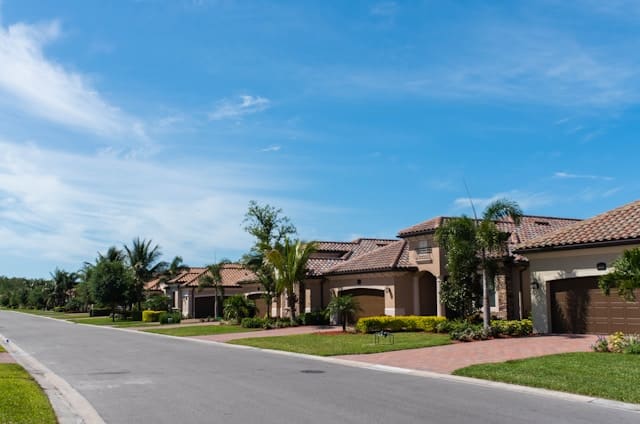What Are the Effective Methods for Soundproofing High-Rise Residential Buildings?

Soundproofing residential buildings is an essential aspect of architectural design and construction. It ensures a peaceful environment in our homes by reducing or eliminating unwanted noise. This article will provide you with insightful information on the effective methods for soundproofing high-rise residential buildings. It will help you understand how to control unwanted noise using different soundproofing materials and techniques. The discussion will focus on five main areas: soundproofing walls, floors, windows, doors, and the acoustical insulation of the entire building.
Soundproofing the Walls
Walls are the primary barriers between your household and the outside world. When not appropriately treated, they can be significant conduits for unwanted noise. Fortunately, numerous soundproofing techniques can be employed to minimize the transmission of sound through walls.
A lire aussi : How to Leverage Community Investment Funds for Real Estate Development Projects?
The most effective method for soundproofing walls is adding extra layers of drywall. Drywall is made from gypsum, a material renowned for its excellent sound-dampening properties. By fixing additional sheets of drywall onto your existing walls, you can significantly reduce the amount of noise transmission.
Another effective technique is the use of acoustic foam panels. Acoustic foam is a lightweight material with a high capacity for absorbing sound waves. When attached to your walls, these foam panels can dramatically reduce the echo and reverberation within your rooms.
A découvrir également : How to Assess the Impact of Local School Quality on Residential Real Estate Values?
Lastly, you can opt for soundproofing paint. Although it may not be as effective as other methods, this special type of paint can absorb some of the sound vibrations, thus dampening the noise levels.
Soundproofing the Floors
Floors are often overlooked when it comes to soundproofing, but they play a crucial role in noise control. This is particularly important in high-rise buildings where noise from upper floors can easily travel downwards.
One effective method of soundproofing floors is the use of carpeting or rugs. A thick carpet or rug can absorb sound vibrations and help mute the noise from foot traffic. Additionally, underlayments such as foam or rubber can be installed beneath the carpet to enhance its soundproofing abilities.
Another popular method is the installation of a floating floor. This involves constructing a new layer of floor above the existing one with a gap in between. This gap acts as a buffer, preventing sound waves from traveling through.
Soundproofing the Windows
Windows are usually the weakest link when it comes to soundproofing a building. Hence, if your aim is to achieve a high degree of sound control, you can’t afford to ignore your windows.
Double glazing is one of the most effective techniques for soundproofing windows. This method involves using two panes of glass with an air gap in between to create a barrier against noise.
If double glazing is out of your budget, you can consider window seals. These are rubber gaskets that are fixed onto the window frame to prevent air – and therefore sound – from entering or leaving the room.
Finally, window inserts can also provide a good level of sound insulation. These are clear panes of glass or plastic that are fitted onto the inside of your existing windows, offering an extra layer of protection against noise.
Soundproofing the Doors
Doors, like windows, often present a weak point in a building’s defenses against noise. Therefore, it is critical to soundproof them adequately.
One effective method of soundproofing doors is the use of weatherstripping. Weatherstripping creates a tight seal around the door that prevents sound from leaking in or out.
Another method is the use of solid-core doors. Unlike hollow-core doors, solid-core doors are made from solid wood or other dense material that can effectively block noise.
Additionally, you can install door sweeps at the bottom of your doors. These are strips of material that fill the gap between the door and the floor, further reducing the amount of noise that can pass through.
Acoustic Insulation of the Entire Building
Acoustic insulation involves the use of special materials designed to absorb or block sound from traveling through the building’s structure. This is a comprehensive approach that addresses the issue at the source.
Mineral wool insulation is a popular choice for this purpose. It is a high-density material that can provide excellent soundproofing across a range of frequencies.
Another effective material is mass-loaded vinyl (MLV). Made from vinyl and barium sulfate or calcium silicate, MLV has a high mass, which makes it a fantastic barrier against noise.
In conclusion, soundproofing a high-rise residential building involves a combination of various techniques and materials that target different parts of the building. By applying these methods correctly, you can achieve a high degree of noise control, ensuring a peaceful living environment for all residents.
Soundproofing High-Traffic Areas
High-traffic areas such as hallways, staircases, and elevators can also be a significant source of noise in high-rise residential buildings. So, it is crucial to consider these areas too, in your soundproofing plans.
One useful noise reduction method is to install sound-absorbing materials such as carpeting or rubber mats in these areas. These materials are specially designed to dampen the impact noise caused by foot traffic. In addition, installing acoustic panels on the walls of these areas can also help to reduce the echo and reverberation caused by sound waves bouncing off hard surfaces.
For elevators, sound isolation techniques can be implemented. One such technique is the installation of a sound isolation enclosure around the elevator machinery. This enclosure is often made from materials with high sound absorption capabilities, such as acoustic foam or mass-loaded vinyl. It can effectively reduce the noise emitted by the machinery, resulting in a significant improvement in overall noise control.
In hallways and staircases, installing soundproof doors at the entrance and exit points can help to prevent the transmission of noise from these high-traffic areas to the residential units.
Controlling Noise from Mechanical Equipment
Mechanical equipment like HVAC systems, water pumps, and generators can also contribute to noise levels in high-rise residential buildings. These equipment often emit low-frequency noise, which can easily travel through the building structure, causing disturbance to residents.
Soundproofing these sources of noise involves using a combination of sound absorption, sound insulation, and vibration isolation techniques.
For instance, sound-absorbing materials like acoustic foam or mineral wool insulation can be installed around the equipment to absorb the sound waves generated.
For sound insulation, equipment rooms can be lined with mass-loaded vinyl or similar high-density materials. These materials can block out the sound transmission, significantly aiding in noise reduction.
Vibration isolation involves the use of anti-vibration mounts or pads beneath the equipment. These devices work by converting the vibrational energy into heat, thereby reducing the amount of noise that gets transmitted through the building structure.
To supplement these methods, regular maintenance of mechanical equipment can help to prevent noise caused by malfunction or wear and tear.
Conclusion
Soundproofing high-rise residential buildings is a multi-faceted task that involves the careful application of various soundproofing materials and techniques. By soundproofing walls, floors, windows, doors, and the entire building, you can significantly reduce noise transmission and create a more peaceful living environment.
Moreover, addressing noise in high-traffic areas and from mechanical equipment is critical to maintaining a high degree of sound control throughout the building.
In all, the ultimate goal is to create a space where residents can live, work, and relax without being disturbed by unwanted noise. To achieve this, it is important to consider the unique needs of the building and its residents, and to choose the most effective soundproofing methods accordingly. With a comprehensive soundproofing plan in place, high-rise residential buildings can indeed be a peaceful haven amidst the bustling cityscape.
